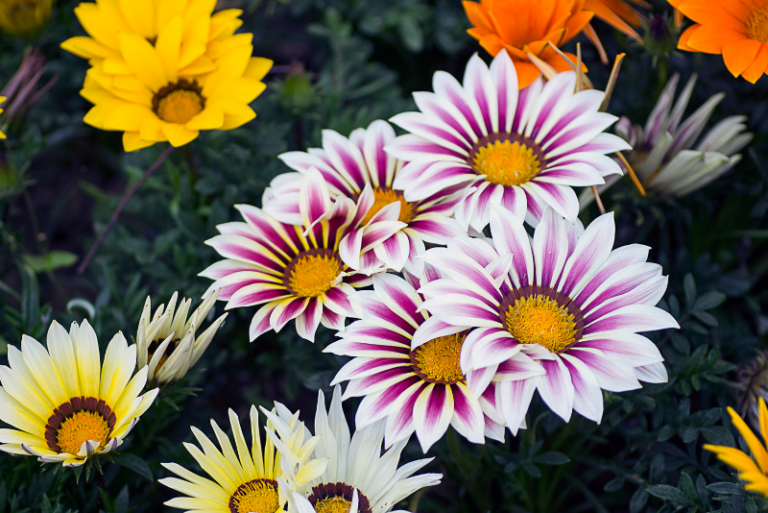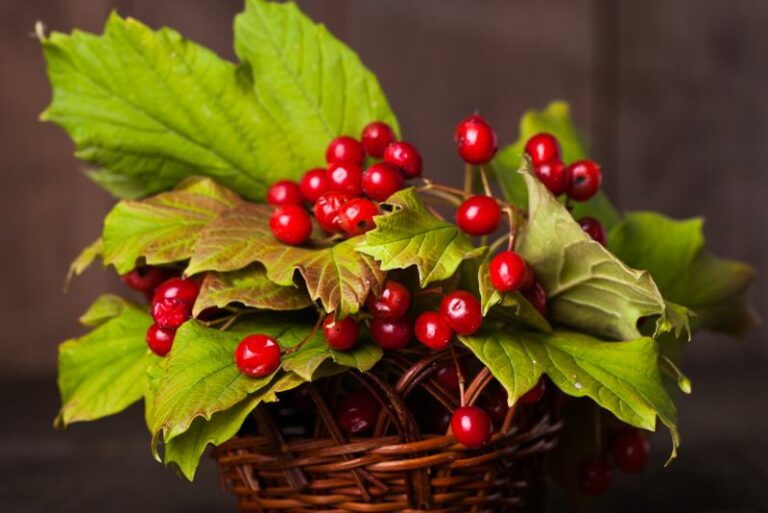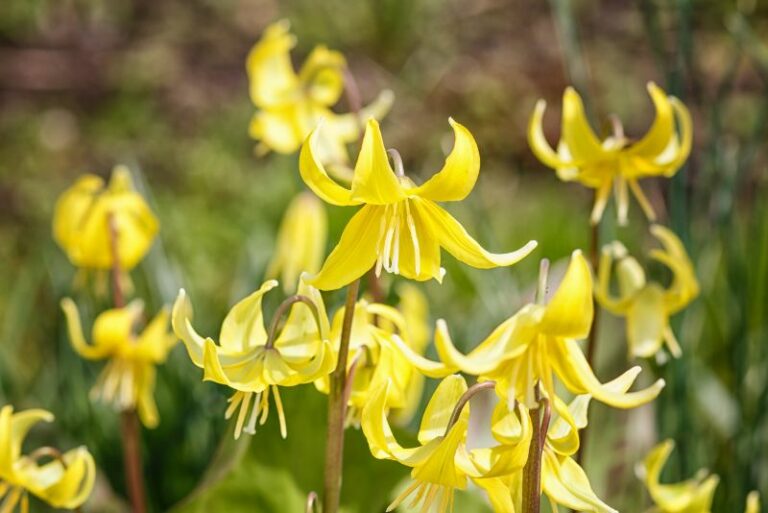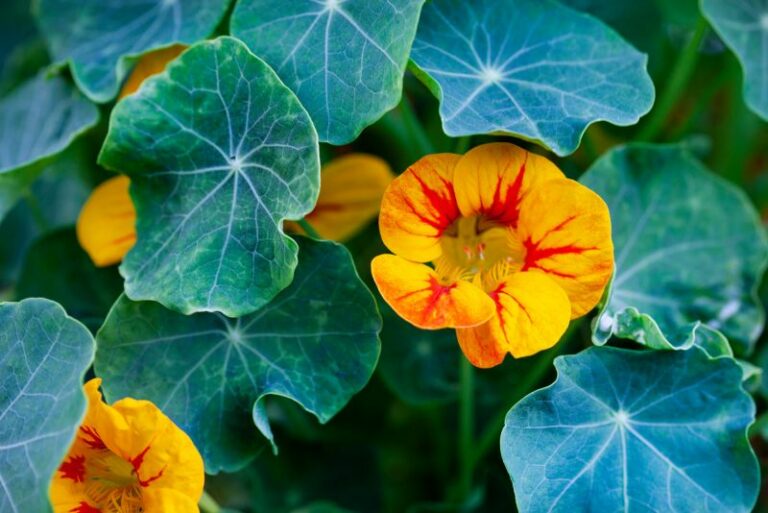How to Plant, Grow, and Care for Hardy Fuchsia: A Dance of Color and Resilience
As your hands delve into the soft, nurturing earth, a promise lies within the delicate seeds you sow – the promise of the hardy fuchsia, a ballet of color and life that defies the typical fragility associated with such exquisite beauty. In this dance of horticulture, we are not mere spectators but active choreographers shaping a performance that spans seasons and captivates the senses.
With a magician’s flourish, the hardy fuchsia springs to life, its pendant-like blooms unwavering in the face of the capriciousness of nature. Yet, as robust as these floral dancers are, the hidden truth lies in their need for understanding and care—a tango of guidance and freedom.
In the forthcoming paragraphs, let us unravel the enigma that is the sturdy yet splendid hardy fuchsia. From selecting the perfect locale that echoes a stage for their vibrant display, to the rituals of planting, embracing their growth, and ensuring their vigor through the seasons, we present to you a flowering manifesto—a paean to those passionate about fostering a pocket of enchantment within their personal green spaces.
Whether you’re a seasoned gardener or a novice entranced by the romance of blooms, preparing your own canopy for the hardy fuchsia’s curtain call is an endeavor worthy of your devotion. Let us guide you throughan epicurean journey of blossoms, a dance of resilience and splendor, that only the hardy fuchsia can perform.
Hardy Fuchsias Overview
Here’s an Overview Table For Hardy Fuchsias:
| Plant Type: Perennial | Maturity Date: Varies, but typically 2-3 years after planting | Attracts: Hummingbirds, butterflies |
| Season: Summer to Fall | Maintenance: Moderate | Hardiness Zone: 6-9 |
| Pests: Aphids, whiteflies | Species: Fuchsia magellanica | Plant with: Other perennials or shrubs |
| Slugs Family: N/A (Not applicable as slugs are not part of the plant’s family) | Growth Rate: Moderate | Planting Depth: Same depth as the pot it came in |
| Exposure: Partial Shade to Full Sun | Soil Type: Moist but well-drained soil | Watering Requirement: Regularly, do not let soil dry out |
| Diseases: Fuchsia rust, Fuchsia gall mite | Native Area: South and Central America | Don’t plant with: Plants that require dry conditions |
| Genus: Fuchsia | Plant Spacing: 2-3 feet apart | Height: 1-10 feet |
Please note that some information like ‘Slugs Family’ is not applicable to the plant as slugs are pests, not a part of the plant’s taxonomy. The information provided is general and can vary depending on the specific variety of hardy fuchsias and local growing conditions.
All About Hardy Fuchsias
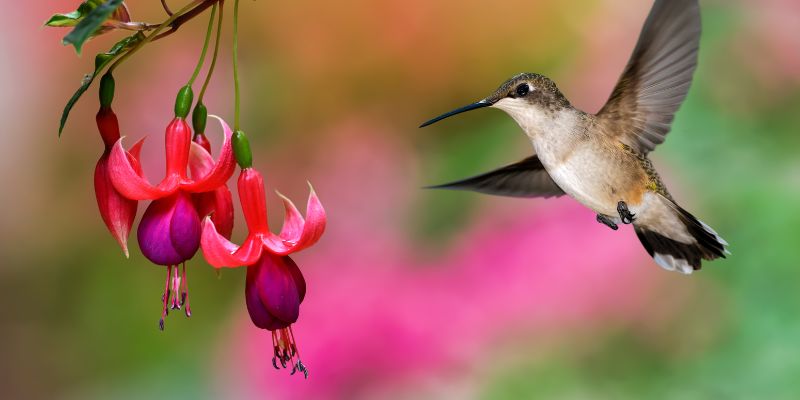
Hardy fuchsias, distinguished from their more tropical relatives, thrive in cooler climates, where other fuchsias may falter. These resilient varieties boast a cornucopia of colors, shapes, and sizes, their pendulous blossoms often comprising a delightful palette ranging from deep purples and reds to soft pinks and whites. Petals swirl elegantly around long, slender stamens, offering an alluring centerpiece to any garden vignette.
Choosing the Right Variety
When selecting a hardy fuchsia for your garden, consider the many cultivars available, each with its unique charm. ‘Delta’s Sarah’ wows with large, double flowers of purple and white, while ‘Hawkshead’ mesmerizes with delicate white petals kissed with a touch of green. For stunning contrast, ‘Tom Thumb’ offers bold blooms on a compact shrub fit for smaller spaces.
Ideal Planting Conditions
Hardy fuchsias flourish in well-drained soil rich in organic matter. They prefer a spot with morning sun and afternoon shade so their roots can stay cool as they bask in gentle sunlight. These resilient dancers require a balanced pH, ideally between 6 and 7, and benefit greatly from a layer of mulch to retain moisture and regulate soil temperature.
Tending to Your Hardy Fuchsias
Watering is a pivotal aspect of care—consistent hydration without waterlogging is key. Regular deadheading will keep your fuchsias producing flowers abundantly, while light pruning retains their graceful form. In the late winter, a more significant cutback stimulates robust growth and ensures the forthcoming season’s bloom is as breathtaking as the last.
By attending to these various aspects of their cultivation, you provide the hardy fuchsias not just with the sustenance they require, but with the care and attention that allows them to truly thrive. In return, they will grace your gardens with their dynamic, balletic display, a true spectacle of resilience and elegance.
Hardy Fuchsias Varieties
A Closer Look at Hardy Fuchsias Varieties
When curating a selection of hardy fuchsias, one encounters a lineage of plants with a storied past, graceful aesthetics, and a subtle, yet enchanting scent. These varieties hold within them the history of gardeners through the ages — each one cultivated with care to bear stunning flowers that brave the cooler climates.
‘Delta’s Sarah’, a cultivar of remarkable beauty, possesses blooms of vibrant purple edged with pristine white. This variety’s history ties it to botanical innovation, bred for its unique color contrast and full double petals. It is a testament to the high art of fuchsia breeding.
‘Hawkshead’, with its elegant, long white sepals and pale green tips, carries a scent as delicate as its appearance. Its ethereal blooms captivate those who seek a touch of purity in their garden.
‘Tom Thumb’ is a piece of living history, a compact shrub well-suited for the gardener with limited space. Its bright red and purple flowers exhibit similarities to the species found in the wild, offering both vibrant color and a heritage-rich presence.
Each variety shares common traits — such as drooping, bell-like flowers, a hardiness capable of withstanding temperate conditions, and a mesmerizing scent that is subtle but distinctive. Yet, it is in the differences where the beauty of each cultivar truly shines, be it in the sweep of a petal or the depth of a hue.
By celebrating the diversity within the hardy fuchsia family, we not only honor the plant’s rich past but also contribute to its enduring legacy. Whether you’re drawn to the drama of ‘Delta’s Sarah,’ the quiet allure of ‘Hawkshead,’ or the historic charm of ‘Tom Thumb,’ each variety has a story to share and a beauty to unveil season after season.
Hardy Fuchsias Care Procedures
Light and Temperature Requirements for Hardy Fuchsias
Creating the optimal environment for hardy fuchsias is fundamental for their success. Light and temperature play critical roles in nurturing these captivating plants. Let’s delve into how best to manage these elements to encourage a vibrant and hardy fuchsia garden.
The Dance of Light
Hardy fuchsias are averse to the scorching afternoon sun. Instead, they prefer the soft caress of the morning light, which is less intense and provides the warmth they need without the risk of heat stress. A spot that offers dappled sunlight or light shade during the afternoon is ideal. This helps to replicate the conditions found in their native habitats, under the partial cover of other plants or trees where bright but indirect light is the norm.
Regulating Temperature
While it is true that hardy fuchsias are tolerant of cooler climates, they do have limits. They are most content in temperatures that range from 60°F to 70°F (15°C to 21°C). When planting, it is important to take into account the microclimates within your garden. Hardy fuchsias should be placed in an area that is shielded from the chill of frost pockets and the harsh winds that can accompany cold fronts. During winter, a protective layer of mulch can help to insulate the roots against freezing temperatures, while during hot spells, ensuring adequate moisture can prevent the foliage and blooms from wilting.
Creating a microclimate that mimics their natural environment, with the right balance of light and temperature, will not only keep your hardy fuchsias happy but will also encourage them to flourish, reward you with their delicate blossoms, and transform your garden into a captivating floral ballet.
Water and Humidity Management for Hardy Fuchsias
The Essential Balance of Moisture
Watering hardy fuchsias effectively requires a delicate balance — providing enough moisture to keep the soil consistently damp, yet avoiding the pitfalls of waterlogging and root rot. During the growing season, when fuchsias are actively blooming and developing, a thorough watering several times a week may be necessary. The goal is to saturate the root zone, allowing the water to penetrate deeply, rather than just wetting the surface of the soil. This encourages the plants to develop a robust root system that can support lush top growth and abundant flowering.
Mulching for Moisture Retention
A layer of organic mulch, such as bark or leaf mold, applied around the base of your fuchsias can be a boon for moisture retention. Mulch helps to keep the soil cool and moist, reducing the frequency of watering by slowing evaporation. In addition, as mulch breaks down over time, it contributes to the soil’s structure and fertility, improving overall plant health.
Coping with Climate and Humidity
In areas with hot, dry summers, hardy fuchsias may require additional attention to prevent stress. Humidity levels should be monitored, especially for potted specimens, as they are more prone to drying out. If your fuchsias are showing signs of dehydration — such as wilting or dry, crispy leaves — a gentle misting in the early morning or late afternoon can help increase humidity and alleviate stress, though care should be taken not to promote leaf wetness diseases.
Winter Watering and Dormancy
As temperatures dip in autumn, hardy fuchsias will benefit from reduced watering as they enter dormancy. Overwintering fuchsias still require some moisture, particularly those in containers, but the frequency should be diminished. Ensure the soil is not completely dry, yet be conservative to avoid root rot, as the plants are not actively absorbing water during this rest period.
By mastering the subtle dance of watering and humidity control, gardeners can ensure that their hardy fuchsias remain vibrant and healthful, capturing the essence of their unique charm throughout the seasons. Remember, the needs of these plants may vary based on region, climate, and local weather conditions, requiring a careful and observant gardening approach.
Soil Requirements and Preparation for Hardy Fuchsias
Understanding Soil Types
Hardy fuchsias thrive best in soils that offer good drainage with a rich organic content. Be it clay, sandy, or loamy soils, the key characteristic should be its ability to hold moisture without becoming waterlogged. Soil that is too heavy and retains water can lead to root rot, while soil that is too light may not provide sufficient nutrients or moisture to the plants.
Ideal Soil pH for Healthy Growth
The pH level of the soil is also critical for the optimal growth of hardy fuchsia plants. They prefer a slightly acidic to neutral pH, ranging from 6.0 to 7.0. Testing your soil’s pH can determine if adjustments are necessary. If your soil is too alkaline, you can lower the pH by incorporating sulfur or peat moss. Conversely, if it is too acidic, adding lime can help balance it out.
Preparing the Soil for Planting
Before planting your hardy fuchsias, take the time to prepare the soil carefully to give your plants the best possible start:
- Step 1: Testing and Adjusting the Soil
Begin by testing the soil to determine its type and pH. Adjust the pH if necessary, and assess the soil structure.
- Step 2: Enhancing Soil Structure
If your soil is clay-rich and heavy, incorporate plenty of organic matter such as compost, well-rotted manure, or leaf mold to improve drainage. In sandy soils, these amendments will enhance water and nutrient retention.
- Step 3: Digging and Aeration
Dig the area where you plan to plant to a depth of at least 12-18 inches, turning the soil and breaking up large clods to aerate it thoroughly. This will encourage deeper root growth and improve oxygen availability to the plant roots.
- Step 4: Incorporating Fertilizers
Mix in a balanced, slow-release fertilizer according to the package instructions to provide initial nutrients. Alternatively, you can use an organic fertilizer like blood meal or fish emulsion to enrich the soil naturally.
- Step 5: Planting and Mulching
After planting your hardy fuchsias, apply a generous layer of organic mulch around the plants. This will help protect the soil structure, preserve moisture, regulate temperature, and gradually add nutrients as it decomposes.
By creating an environment with the right soil conditions, you set the stage for your hardy fuchsias to establish themselves with strength and vigor, ensuring they bring beauty and pleasure to your garden year after year.
Fertilizer Application for Hardy Fuchsias
Assessing Fertilizer Needs
Hardy fuchsias, being relatively vigorous growers, require regular feeding during the growing season to sustain their remarkable display of flowers. Assess the fertilizer needs of your plants by observing their growth rate and leaf color. A lack of nutrients may manifest in slow growth and pale or yellow leaves.
Choosing the Right Fertilizer
Selecting a suitable fertilizer is crucial for the health of your hardy fuchsias. A balanced fertilizer with equal proportions of nitrogen (N), phosphorus (P), and potassium (K) such as a 10-10-10 or 20-20-20 formulation is ideal for overall plant health. For promoting blooming, choose a fertilizer with a higher phosphorus content.
Frequency of Fertilization
During the peak growing season, typically from spring to late summer, fertilize your hardy fuchsias every two to four weeks. It is advisable to follow the recommendations on the fertilizer packaging to prevent overfeeding, which can lead to nutrient burn and damage the plants.
Application Methods
- Granular Fertilizers: Apply granular fertilizers directly to the soil around the plants, then water thoroughly to help the nutrients seep down to the roots.
- Liquid Fertilizers: Liquid fertilizers are readily absorbed by the plants. They should be diluted as per the instructions and can be applied directly to the soil or used as a foliar feed.
Special Considerations
- Potted Fuchsias: Container-grown fuchsias often need more frequent feeding as nutrients can leach out with watering. Opt for slow-release granular fertilizers or half-strength liquid fertilizers applied more regularly.
- Overwintering: Reduce fertilization as your fuchsias approach dormancy in late summer and fall. Throughout the winter, avoid fertilizing dormant plants, as they are not actively growing and cannot utilize the nutrients.
Organic Alternatives
For gardeners preferring organic options, fish emulsion, bone meal, and compost are excellent alternatives. These provide a slower release of nutrients and improve soil health over time.
Monitoring and Adjusting
Regularly monitor your fuchsias’ response to fertilization. Adjust your practices as needed based on the plant’s health and appearance. Healthy hardy fuchsias should display vigorous growth and abundant blooms when properly fertilized.
By following these care procedures for fertilizing your hardy fuchsias, you can ensure they receive the nutrition they require to thrive and grace your garden with their vibrant colors and graceful forms. Remember to adjust your approach based on specific plant needs and environmental conditions to maintain the health and beauty of your fuchsias.
Repotting Hardy Fuchsias: A Detailed Guide
Repotting is an essential part of caring for container-grown hardy fuchsias to ensure they continue to flourish year after year. Here are the steps to follow for successful repotting:
Determining When to Repot
Monitor your fuchsias for signs that they require repotting, such as roots growing through the drainage holes, slower growth, or the plant becoming top-heavy and tipping over. It is typically best to repot in the early spring before the new growth begins.
Selecting the Right Pot
Choose a new pot that is one size larger than the current one to give your plant room to grow. Ensure the pot has adequate drainage holes to prevent waterlogging. A pot made of breathable material like terra-cotta can help maintain soil moisture balance.
Preparing the New Pot
Place a layer of pebbles or broken pottery pieces at the bottom of the new pot to improve drainage. Fill the pot partially with a suitable potting mix that drains well and is rich in organic matter.
Repotting Steps
- Step 1: Gently Remove the Plant
Carefully take the fuchsia out of its current pot. Loosen the roots gently with your fingers if they are tightly bound.
- Step 2: Inspect and Prune the Roots
Inspect the root system and trim any dead or overly long roots. This will encourage the growth of healthy new roots.
- Step 3: Positioning in the New Pot
Place the fuchsia in the center of the new pot. The surface of the root ball should be one inch below the rim of the pot to allow for watering.
- Step 4: Adding Soil
Add potting mix around the roots, tapping the pot gently to settle the soil and eliminate air pockets. Do not bury the stem deeper than it was in the previous pot.
- Step 5: Watering
Water the plant thoroughly after repotting to settle the soil and eliminate any remaining air gaps. Allow the water to drain completely.
Post-Repotting Care
After repotting, place your fuchsia in a location with diffused light and avoid direct sunlight for a few days to reduce stress. Resume regular care once the plant shows signs of new growth, indicating it has adapted to the new pot.
Long-Term Considerations
Repot your fuchsias every two to three years to refresh the soil and provide room for root expansion. This routine maintenance will keep your hardy fuchsias healthy and vibrant.
By following these repotting procedures, you ensure that your hardy fuchsias have the room they need to grow and the fresh soil required to supply the necessary nutrients for continued blooming and vigorous health. Keep in mind that gentle handling and proper aftercare are key to a smooth transition during the repotting process.
Propagating Hardy Fuchsias: A Step-by-Step Guide
Methods of Propagation
Hardy fuchsias can be propagated by various methods, including division, cuttings, and seeds. This provides flexibility for gardeners who want to expand their collection or share these charming plants with friends and fellow enthusiasts. Below, we outline the procedures for each propagation method.
Propagation by Division
- Timing: The best time to divide hardy fuchsias is in early spring when new growth appears.
- Process: Carefully remove the fuchsia from its pot or the ground and divide it into smaller sections, ensuring that each section has a healthy piece of root and at least one shoot. Replant each division in a suitable potting mix and keep it well-watered until it establishes.
Propagation by Cuttings
- Timing: Take softwood cuttings from new growth in late spring or early summer, or semi-hardwood cuttings in late summer to early fall.
- Procedure:
- Cutting Preparation: Select a healthy shoot and cut a 4-6 inch piece just below a leaf node. Remove the lower leaves, leaving only a few at the top.
- Rooting Hormone: (Optional) Dip the cut end in rooting hormone powder to encourage root growth.
- Planting: Place the cutting in a pot with moistened, well-draining potting mix or a mix of peat and perlite.
- Environment: Cover the pot with a clear plastic bag or place it in a propagator to maintain high humidity and warmth, ensuring the bag doesn’t touch the leaves.
- Aftercare: Open the bag every few days to prevent mold and keep the soil lightly moist. Once roots develop, remove the plastic and continue to grow the cutting in a bright location, avoiding direct sunlight until established.
Propagation by Seeds
- Timing: Plant seeds in late winter or early spring by starting them indoors.
- Sowing Process:
- Seed Preparation: Fill a tray or pot with a seed-starting mix and sprinkle the seeds on top.
- Light Covering: Hardy fuchsia seeds need light to germinate, so cover them lightly with the mix or vermiculite.
- Moisture and Warmth: Keep the soil moist and warm, preferably between 70-75°F (21-24°C).
- Germination: Expect germination in 21-28 days, though it can be variable.
- Transplanting: Once seedlings have developed two sets of true leaves, transplant them into individual pots to grow until they are strong enough to plant outside after all danger of frost has passed.
Aftercare for Propagated Plants
Regardless of the method used, aftercare for newly propagated hardy fuchsias is crucial for success. Keep the plants in a sheltered location with diffused light and maintain consistent moisture. Slowly acclimate them to outdoor conditions before planting them in their final location. With patience and care, these new plants will flourish and contribute to a lush and colorful garden display.
By mastering these propagation techniques, gardeners can create a thriving display of hardy fuchsias, ensuring an abundance of beautifully delicate blooms and foliage throughout the growing seasons.
Hardy Fuchsias: Care Procedures for Pruning
Why Prune Hardy Fuchsias?
Pruning hardy fuchsias is essential for maintaining plant health, promoting vigorous growth, and enhancing flowering. It helps to shape the plant, encourage the development of strong stems, and remove any dead or diseased material that could impede the fuchsia’s performance.
Pruning Steps
- Step 1: Assess the Plant
Observe the overall shape and health of your fuchsia. Identify any dead, damaged, or diseased branches, which should be pruned away to prevent potential problems from spreading.
- Step 2: Sanitize Your Tools
Clean and sterilize your pruning shears with rubbing alcohol or a bleach solution to minimize the risk of transmitting diseases between plants.
- Step 3: Begin Pruning
Start by removing deadwood and any crossing branches that might rub against each other and cause wounds. Cut back to just above a healthy set of leaves or a budding node.
- Step 4: Shape the Plant
If shaping is necessary, cut back the fuchsia to maintain a pleasing form, ensuring that any cuts are made at a 45-degree angle to prevent water from accumulating on the cut surface, which could lead to rot.
- Step 5: Thin the Center
Thin out the center of the plant to allow light and air to penetrate, reducing the likelihood of fungal diseases and encouraging even growth.
- Step 6: Hard Pruning (if needed)
In late winter or early spring, if the fuchsia has become particularly leggy or overgrown, you can perform a hard prune by cutting it back to 6-12 inches. This might seem extreme, but hardy fuchsias often respond well, growing back more robustly.
Post-Pruning Care
- Fertilization: After pruning, feed your hardy fuchsias with a balanced, slow-release fertilizer to support new growth.
- Watering: Keep the soil consistently moist, especially right after pruning, to facilitate a quick recovery.
- Mulching: Apply a layer of organic mulch around the base of the plant to maintain soil moisture and temperature, and to add nutrients as it breaks down.
Pruning Schedule
Hardy fuchsias typically require pruning at two key times during the year:
- Spring Pruning: As new growth appears in the spring, lightly prune for shaping and remove any winter damage.
- Late Winter Pruning: Perform more extensive pruning in late winter before the plant breaks dormancy to invigorate the fuchsia for the upcoming growing season.
By following these detailed care procedures for pruning, you’ll ensure that your hardy fuchsias remain healthy, well-shaped, and prolific bloomers. Regular attention and timely pruning will reward you with a bountiful display of their iconic blossoms year after year.
Troubleshooting
Maintaining the health of hardy fuchsias can involve addressing a few common issues that may arise during their growth. Troubleshooting these problems early is key to ensuring the vitality of these stunning plants.
Growing Problems
- Leggy Growth: Insufficient light often causes fuchsias to grow long and spindly. To remedy this, ensure your plant receives adequate indirect sunlight or consider pruning to encourage bushier growth.
- Leaf Drop: Sudden leaf drop can be triggered by a change in temperature or environment. Check that your fuchsia isn’t exposed to drafts and that the temperature remains consistently cool to moderate.
- Weak Flowering: Overfeeding with high nitrogen fertilizers might boost foliage at the expense of flowers. Use a balanced fertilizer to encourage a good bloom to leaf ratio.
Pests
- Aphids: These small sap-sucking insects are drawn to new growth, potentially distorting leaves and stems. Natural predators, such as ladybugs, can help control aphids, or you can use an insecticidal soap as a treatment.
- Whiteflies: Whiteflies can be identified by the small white clouds that arise when infested plants are disturbed. Yellow sticky traps and insecticidal soaps can manage these pests effectively.
- Red Spider Mites: Often in dry, hot conditions, mites can be problematic, causing fine webbing and discolored foliage. Increasing humidity and applying miticides can help combat an infestation.
Diseases
- Fuchsia Rust: This fungal disease causes orange pustules on the undersides of leaves. Remove affected foliage and treat with fungicide to prevent further spread.
- Fuchsia Gall Mite: These microscopic pests cause distorted growth, particularly on flower buds and stems. Prune out and destroy affected plant parts. Chemical controls are available but may need professional application.
- Botrytis Blight: Also known as grey mold, this can affect flowers and stems in damp conditions. Good air circulation, avoiding overhead watering, and reducing humidity can help, as can fungicidal sprays.
Monitoring your hardy fuchsias regularly and taking preemptive steps to ward off these issues can promote a healthy and more resilient plant. In addition, understanding the particular needs of fuchsias will be instrumental in keeping most problems at bay and enjoying their vibrant blooms throughout the growing season.
Frequently Asked Questions
How often should I water my hardy fuchsia?
Hardy fuchsias should be watered when the top inch of soil feels dry to the touch. Ensure that the plant is in well-draining soil to prevent waterlogging, which can lead to root rot.
Can hardy fuchsias survive winter outdoors?
Yes, hardy fuchsias are bred to endure cooler temperatures and can survive outdoors in the winter, especially if mulched properly. However, in regions where temperatures drop below their hardiness level, it is advisable to provide some protection.
What is the best fertilizer for hardy fuchsias?
A balanced, slow-release fertilizer applied in the spring and perhaps again in midsummer is ideal for hardy fuchsias. Avoid high nitrogen fertilizers that promote foliage growth at the expense of flowers.
How do I propagate hardy fuchsias?
Hardy fuchsias can be propagated through softwood cuttings taken in the spring or semi-hardwood cuttings in the summer. Rooting hormone can aid in the success of cuttings.
When is the best time to plant hardy fuchsias?
The best time to plant hardy fuchsias is in the spring after the threat of frost has passed and the soil has warmed up.



